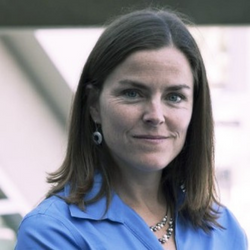There’s no doubt that organizations are struggling with the acquisition and retention of drug research and development talent, and the longer this goes on, the clearer it becomes that there are forces at work that no amount of wishful thinking about “Employee Value Propositions” by human resources (HR) functionaries can address. These forces include:
Mergers and Acquisitions (M&A) Exhaustion
“Amir,” currently employed as Quality Assurance Director at a small, U.S.-based biotech, contends with daily anxiety due to M&A uncertainty: “I came to this company because I was inspired by its mission,” he says, “but it’s been years of constant reorganization, and now there are rumors that we’re getting acquired.” If true, this will be his third employment disruption due to M&A. He goes on to say, “It doesn’t seem to matter how good you are at your job. Some incredibly great people have been let go. I wonder if I should start looking for something more stable, like going back to research.”
The Upper Rungs of the Corporate Ladder are Unattractive to Some (Most?)
A tenet of any organizational chart is that reaching the highest levels of management is the primary career goal that all workers share. “Dana,” a former Vice President of Biometrics, is proof that for some, this is false. “I may as well have been managing 75 accountants for all the more I touched data science,” she says. “The role was nothing but resource and profit and loss management. To be totally honest, I hated it.” She left to become an independent consultant and couldn’t be happier. “I get to practice my craft, which is my true love: data science,” she says of her current specialty in data-oriented oversight of contract research organizations.
The Upper Rung Contraction Cliff
Even for those who aspire to management, there may be a precipitous gap between the number of upper positions available and the number of internal candidates vying for them. “Renard,” a product labeling and regulatory operations specialist, reached Director level at the 10-year mark, along with several of his peers, and he wanted more. However, those occupying the upper rungs of the corporate ladder were all entrenched long-timers, and it was unlikely there would be a higher level opening anytime soon. So he waited. At the 12-year mark he started to worry. At year 14 with still no openings above or even laterally in related departments, he reluctantly realized he might have to change companies in order to move up.
It took a year, but Renard found a great position at a different company. Unfortunately, it was in a different city, three states away. He uprooted his spouse and two school-aged kids and up the ladder they all went. Three years later, in a similarly level-stagnant company, another opportunity opened up in yet another city and state. Once again, off they all went. “Maybe it’s just been my experience, but almost every drug sponsor I’ve worked at seems to prefer skills at the 10-year mark,” he says. “Meaning, once you reach that mark, they want you to just stay put and keep churning there without promoting you further. When they do fill an opening at the next level, they seem to prefer bringing someone in from the outside.”
Conclusion
Years of voracious M&A activity industry wide have inevitably taken a toll on any sense of stability among many in the drug development talent pool. Long-term job security, once the hallmark of the pharmaceutical industry, is no more. Many workers, especially highly skilled experts, want to practice their craft far more than they want the supposed trappings of management.
Applying more polish to the same old corporate ladder will not yield the acquisition and retention results HR longs for. It’s time to call a spade a spade and incorporate these trends into workforce strategies that truly speak to what’s on workers’ minds.
Submitted by Sheila Mahoney-Jewels, MBA, a Life Sciences Ecosystem Expert with LifeSciHub.



